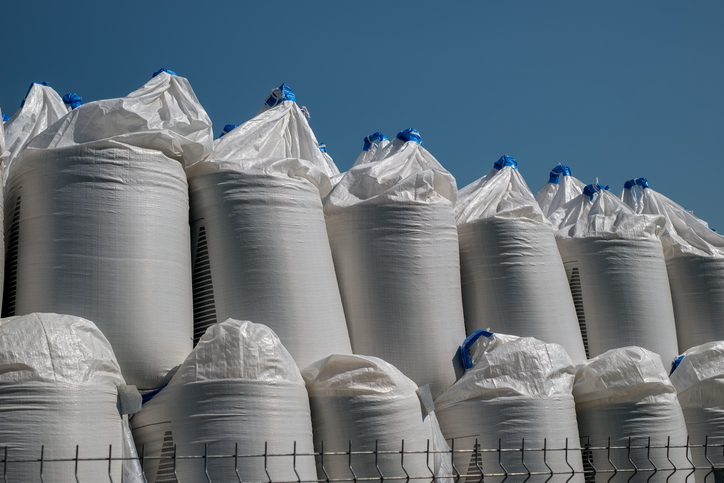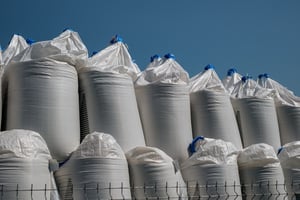
It's Not Just the Product
Bulk material handling involves a wide range of processes, which can be costly. In addition to high transportation costs, food ingredient prices are increasing faster than many other products. That puts corporate procurement under pressure to identify opportunities for savings in the bulk ingredient materials.
Naturally, any decision is accompanied by quality testing, assurances and proper due diligence. The bulk ingredient will satisfy the quality requirements.
That may not be the only factor in pricing, however. New suppliers often look for an edge to let them offer lower, appealing prices to land new business. In our experience, we find that when a company experiences a sudden change in the performance of their bulk bag discharger, it almost always comes in conjunction with a supplier changing the bulk material.
If the material itself is tested and meets the standards, what could cause deteriorated performance?
The answer may surprise you: the bulk bag liner.
Understanding the Role of the Bulk Bag & Liner
One of the critical elements of bulk material handling is the bag and the liner. Their role in the process is moving 2,000 pounds of bulk material from the processing facility to your factory. That means keeping it clean, protected from elements, and free of contamination.
The bag also needs to reliably contain the product and provide safe lifting. There are operational and safety benefits to using an electric hoist. Safety latches are also provided on the lifting hooks. Additionally, in the rare event that a bag fails, having a fully integrated safety table above the connection point is essential for operator safety.
The role of the liner in bulk material handling is not often discussed. Many of the liner functions relate to product integrity — keeping it clean and dry. The liner also plays an overlooked role in the unloading itself. As you might expect, less expensive liners cause problems that can range from negligible to substantial and expensive from an operations perspective.
Adequate and Consistent Outlet Spout
Inexpensive liner bags often arrive with inconsistent outlet spout lengths. This can cause problems at the discharge point. If they're too long, that's easy to fix. But that's rarely the problem. When the outlet spout is too short it jeopardizes the clamping seal around the discharge chute (in AZO's case our BBA unit). 
If the clamping is tenuous, not only is the connection not dust tight, but it may also restrict the vigor with which the bulk bag unloading system massage pads and vibration motor can manipulate the bag. That reduces the effectiveness of the flow assistance technologies and can result in reduced flow, blockages and bags that aren't completely emptied.
In some cases there may also be product waste and maintenance costs as poor spout connection can result in spilled product and related cleanup time.
Formed Liners Facilitate Flow
When performance suddenly changes with a supplier switch, we often see companies change from a formed bulk bag liner to a straight liner bag. This often causes issues when it comes to bulk material handling.
As you picture an emptying bulk bag, perhaps stretched by the electric hoist (or fork truck in a more cumbersome and dangerous process), it's easy to visualize how the bottom of the bag becomes deformed.
Formed liners tend to flex and encourage full emptying of the product (often in conjunction with vibration and massage pads). Less expensive straight bag liners, however, create pockets where material can be caught and become difficult to discharge without more significant manual intervention. That intervention can certainly happen (although the labor costs are a net offset to the material savings) but often doesn't. Additionally, the straight liner bag can cause poor connection issues discussed previously.
As a result, bulk bags may be discarded with material left in them. A material cost reduction of 5 percent can be largely offset by a couple percent of product wasted when it's left in the bags as they're discarded.
The residual product not only represents waste, but can also create maintenance challenges. Some bulk bag unloaders are equipped with vacuum bag collapsing systems which would capture any residual dust/product. Often the empty bulk bags are manually folded and compressed for waste removal. You've probably seen them being stomped on to compress them. Just imagine the consequence of product that wasn't fully discharged because of an inexpensive liner, puffing out into the factory and requiring extensive cleanup and ambient dust control.
Understand the Net Cost and Sources of Savings
Companies have to monitor and manage costs. And sophisticated procurement departments are careful to ensure that product savings don't jeopardize quality and performance. But sometimes other seemingly small details can offset some or all of the planned savings, and unseen costs can quickly add up and undermine the bottom line.
At AZO we often find the source of bulk bag unloading hassles is actually an issue related to a cheap liner bag. That’s why it’s important that your bulk material handling system is fit for the job. You can save yourself a lot of time and money knowing if your bulk bag unloader includes:
-
Bucket elevators
-
Screw conveyors
-
Drag conveyors
-
Belt conveyors
-
Dump stations
But it's often the most overlooked item, like a bulk bag liner, that will cost your company money.
You can avoid all of this by optimizing your processing system with a high-performance bulk bag filler. Conveying material isn’t easy. Ensure your material flows smoothly by downloading our guide “Selecting the Best Bulk Unloader For Your Business.” You'll find useful tips for putting together a bulk handling system that works for you. You’ll also learn how to add bulk material handling equipment to your existing bulk bag unloader.


